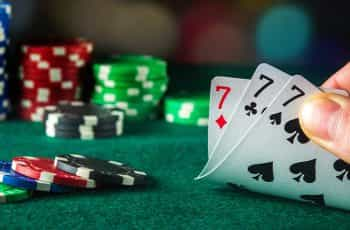
The rules of the game dictate that rock wins over scissors, paper wins over rock, and scissors wins over paper. Typically, the game is concluded after three rounds of play–i.e. It follows the best of three model. The winner has to win at least 2 of 3 rounds to win the game.
Variations of Rock, Paper, Scissors
There are, of course, variations of the game with more or fewer players. One famous variation comes from the TV show “The Big Bang Theory”, and is called ‘rock, paper, scissors, spock, lizard’. Some countries play the original version of the game but call it by different names. In the UK, it’s often called ‘paper scissors stone’. In Germany, it’s known as ‘Schnick, Schnack, Schnuck’. Over in Asia, the Chinese call it ‘Jiandao Shítou Bu’ and the Japanese, ‘Janken’. In Japan, Sansukumi-ken is a variation of rock, paper, scissors, with frog, slug, and snake as elements instead.
Intro to Rock, Paper, Scissors Strategy
Like any game, rock, paper, scissors has a strategy of its own. There is a whole field of study that focuses on how games work, unsurprisingly called Game Theory. Usually, game theory applies more to playing blackjack games but it can also be used for rock, paper, scissors strategy. Before we get into what’ll help you win some games (and get out of chores or impress people at a party), let’s go over the rules.
Probabilities and Outcomes
The basic probability of winning the game is 1:3, because there are three possible moves. Say you’re playing with one opponent, and you play rock. Here are the possibilities of the game:
- Your opponent plays paper, and you lose.
- Your opponent plays scissors, and you win.
- Your opponent plays rock, and you tie.
In the game overall, though, there are four total kinds of outcomes:
- Rock trumps scissors
- Paper trumps rock
- Scissors trumps paper
- There’s a tie.
For some other weird odds and probabilities, check out this article.
Detailed Strategies
Let’s explore some strategies for rock, paper, scissors. We’ll go into detail about each one so that you can pick whichever seems like the best fit for you.
#1 Stay Unpredictable
The most obvious way to win is to make sure you don’t give your opponent any idea of the move you’re going to play. The more unpredictable you are, the better your chances are of not losing. Like in casino poker, a neutral expression is important. It’s even more crucial to make sure your hand doesn’t inadvertently give away the move you’re going to play.
#2 Use Science
Another kind of strategy we’ll explore is backed by empirical research. Chinese academics conducted an in-depth study on decision-making in rock, paper, scissors. The academics had 360 students play 300 rounds of rock, paper, scissors. There are two main findings from the article.
Scientific Strategy #1
The first is that winners tend to play their winning move in the next round. Say you play paper, and your opponent plays scissors and wins. It’s highly likely that your opponent will play scissors again in the next round. With this in mind, your chances of winning increase when you play rock after losing to scissors.
Scientific Strategy #2
Conversely, the other finding showed that a move that loses the game isn’t likely to be repeated in the very next round. Say you play scissors, and your opponent plays rock. You lose the round, and so will probably switch from scissors to rock or paper. This can go either way in terms of strategy.
One way to turn this tendency to your advantage is to use it to predict your opponent’s move in the round after they lose. Say you play paper, and your opponent plays rock and loses. They’re highly likely to switch to paper or scissors instead, which means you probably should play scissors – it’ll give you a win or a tie. If you stay with paper (like winners generally do with their winning move), it’ll likely give you a loss or a tie.
Quick Tip
Here’s a simple way to remember these strategies–or as game theorists call them, ‘heuristics’.
When you win, in the next round, play the element that your opponent lost with. If you won with rock, play scissors. If you won with paper, use rock. If you won with scissors, use paper.
When you lose, in the next round, play the element that neither of you used in the current round. If you lost with rock, play paper. If you lost with paper, use scissors. If you lost with scissors, use paper.
#3 Use Statistics
If the scientific strategies sound too complicated, there are simpler strategies out there.
Play Paper
For example, rock is the most frequently played move at 35.4%. The smart thing to do would be to play paper a little more often than you usually do to counter rock.
No One Plays The Same Move Three Times
Another tip is that if your opponent plays the same move twice in a row, don’t expect them to play it a third time. It’s statistically unlikely. So if your opponent has played rock two times in a row, they’ll probably switch to scissors or paper the next time. The best move against scissors or paper is scissors, since it results in either a tie or a win.
#4 Use Common Sense
Don’t forget that while you keep your hands and face as neutral as possible, your opponent might not be as careful. Look for giveaways in the position of their fingers right before they throw and play the move that would beat theirs.
Frequently Asked Questions
Did you know that rock, paper, scissors was actually invented in China in the 1st Century BCE? As American as the game might seem, it only came to the West in the 19th Century. We hope you enjoyed exploring the world of rock, paper, scissors. But even if you decide to apply these strategies in your next game, don’t forget to have fun. Here are some of the most frequently asked questions about rock, paper, scissors.
What are the odds of winning at rock, paper, scissors?
The odds of winning at rock, paper, scissors are one in three, since there are three total moves you can play. In our introduction to the game we go over the probabilities of winning, and how you can better your odds.
Can you play rock, paper, scissors online?
Yes, you can play rock, paper, scissors online. If you love the game but don’t have someone to play it with, you can always play it on the internet. Don’t forget to test out all the strategies you’ve now learned. Check out our guide to the best online casinos to find sites that might offer the game.
Can you play rock, paper, scissors for money?
Yes, you can play the game rock, paper, scissors for money. You can decide an amount that you’re playing for and then win the required number of rounds to make a profit. For more games you can play online for real money, check out these real money casinos.



